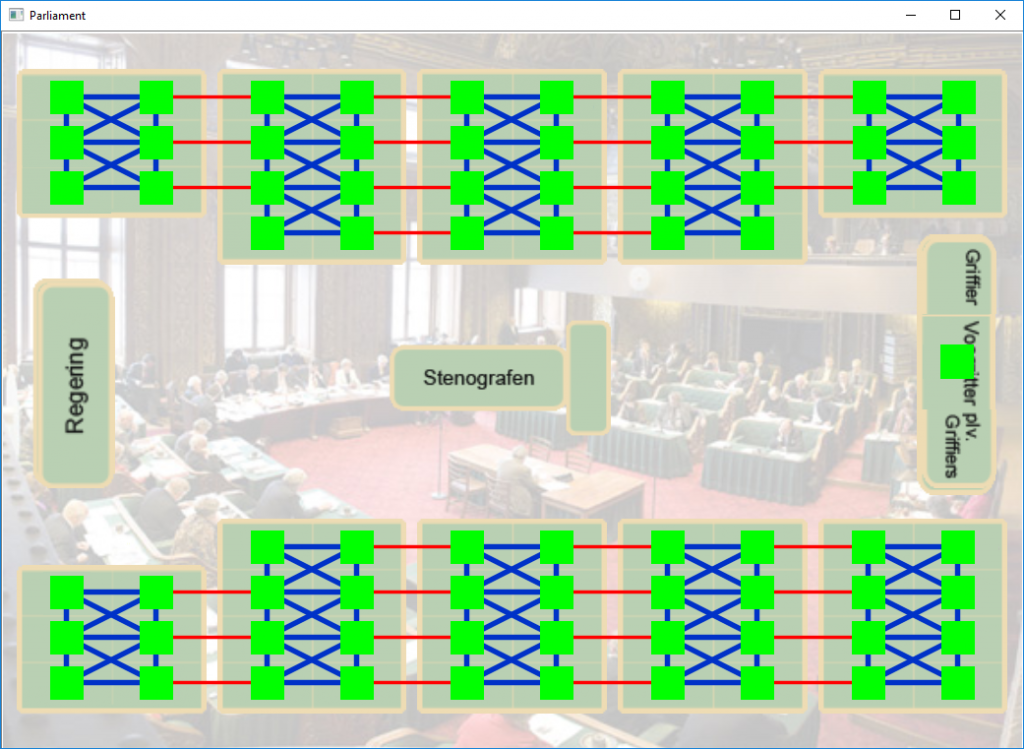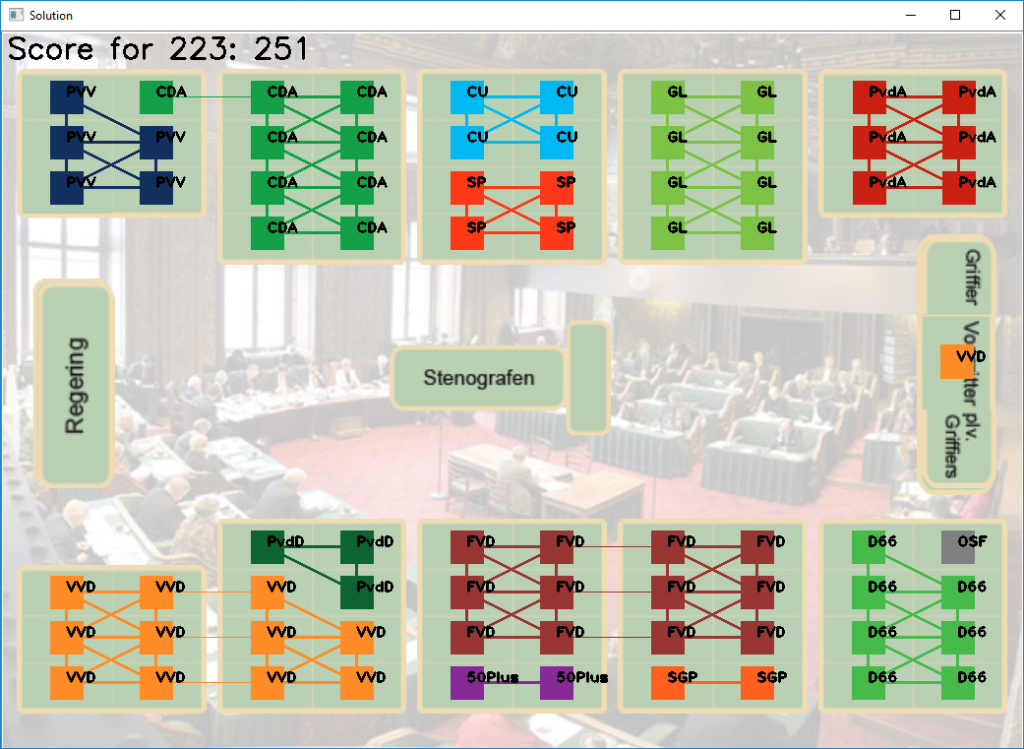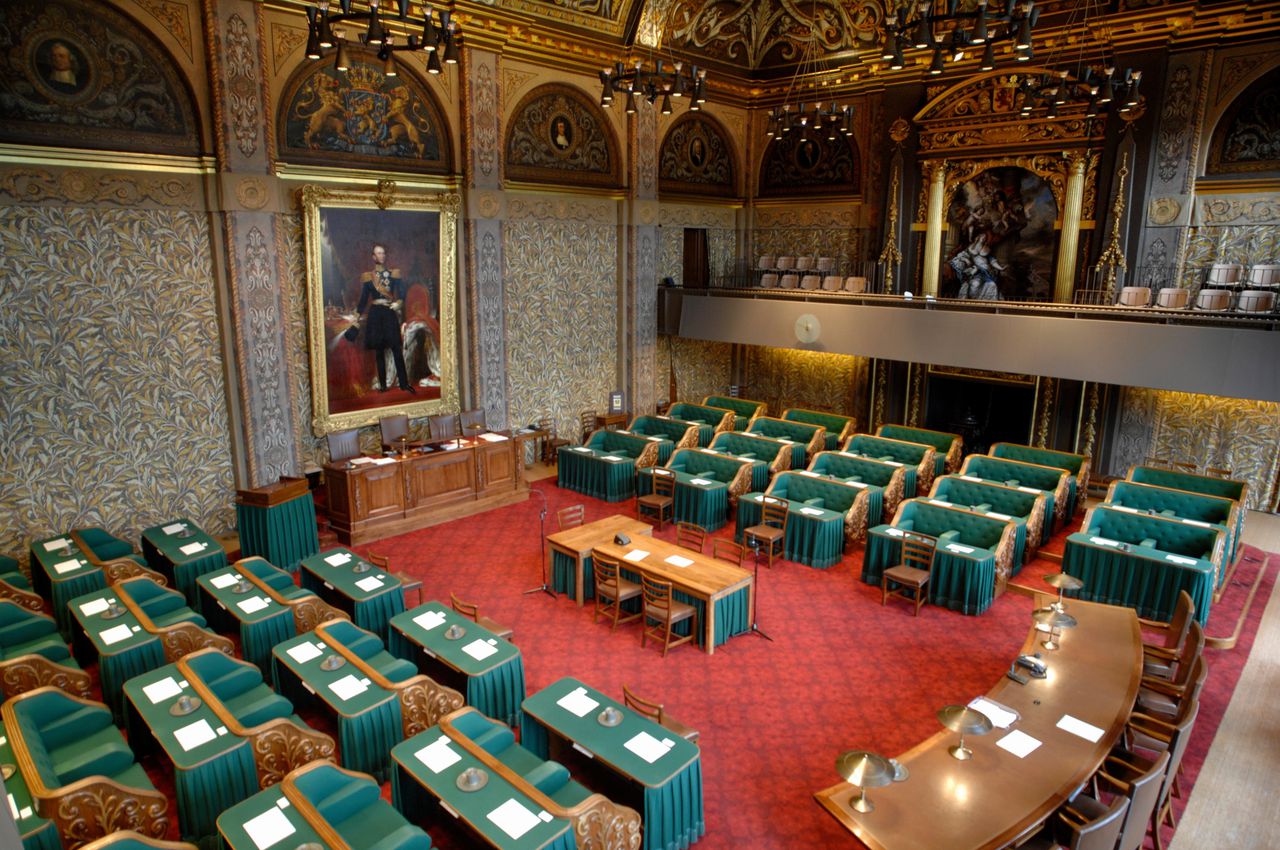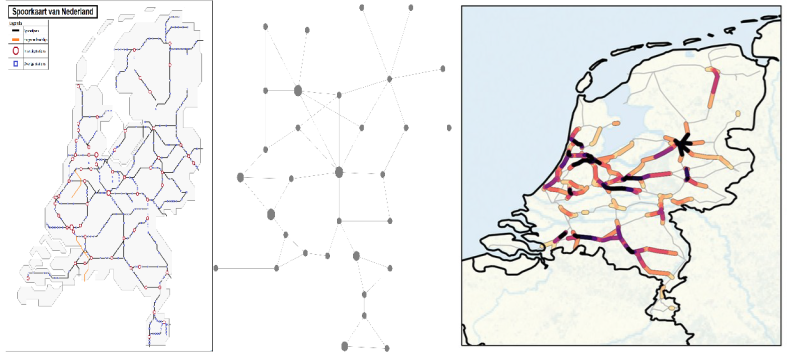In this article we discuss the following question: what is the optimal way to allocate the seats in the senate?
On March 20, 2019, there were provincial elections in the Netherlands. As a consequence, on May 27, 2019, 75 new members of the so-called Eerste Kamer were chosen; they will have their first meeting mid-June. Here, we discuss the following question: who should sit where? In other words, which member of parliament (MP) should receive which chair? Or, finally: which seat-allocation is optimal?
Clearly, communication between MPs should be an important factor when determining a seat-allocation. More concrete, members of the same party should be seated in each other’s vicinity; in fact, as much as possible, neighboring seats should be occupied by members of the same party. There are other relevant issues as well, we mention: distance to the interruption microphone, access to a hallway (see an article in the NRC [1]), a possible left-right distribution of the parties, historical habits. We notice that finding a seat-allocation may be a source of discussion.
We approach this question as follows. First, we determine which pairs of seats in the parliament facilitate easy communication, and which pairs of seats facilitate fair communication. The picture below of the Eerste Kamer sketches easy communication by the blue links, and fair communication by the red links. When two seats between which easy (fair) communication is possible, are assigned to members of the same party, we gain 1 (0.5) point. Of course, the idea is that seat-allocations with more points are better (in terms of communication) than seat-allocations with fewer points. Our objective is to find a seat-allocation with a maximum number of points (and hence a supposedly optimal communication).

Given the results of the elections for the Eerste Kamer, we give below an optimum seat-allocation, where we assume that the VVD provides the chair of the Eerste Kamer.

This seat-allocation was found by solving an integer program; optimality of the solution was proved by using combinatorial arguments. We note that additional conditions or preferences can easily be incorporated in this integer program, see the bachelor thesis of David Tuin [3].
It should be clear that this idea can be applied to any parliament (where MPs have a fixed seat). A procedure as sketched above allows a parliament to arrive at a seat-allocation that is objective and transparent. For a nice overview of the different layouts of parliaments over the world we refer to [2].
Based on an idea by Dries Goossens (U Ghent), Frits Spieksma (TU/e), and Bart Vangerven (U Wuppertal); with computations done by David Tuin (Bachelor student IAM), supervised by Roel Lambers (TU/e).
[1] P. d. W. Wijnen, Stoelendans in nieuwe Tweede Kamer blijft stuiten op bezwaren Denk en Forum - NRC," mar 2017. [Online]. Available: https://www.nrc.nl/nieuws/2017/03/22/stoelendans-in-nieuwe-tweede-kamer-blijft-stuiten-op-bezwaren-denk-en-forum-7516272-a1551485.
[2] XML (Firm), Parliament. [Online]. Available: http://www.parliamentbook.com/book. ISBN: 978-90-9029764-4
[3] David Tuin, Seating the Parliament, Bachelor thesis, Technical University Eindhoven.






